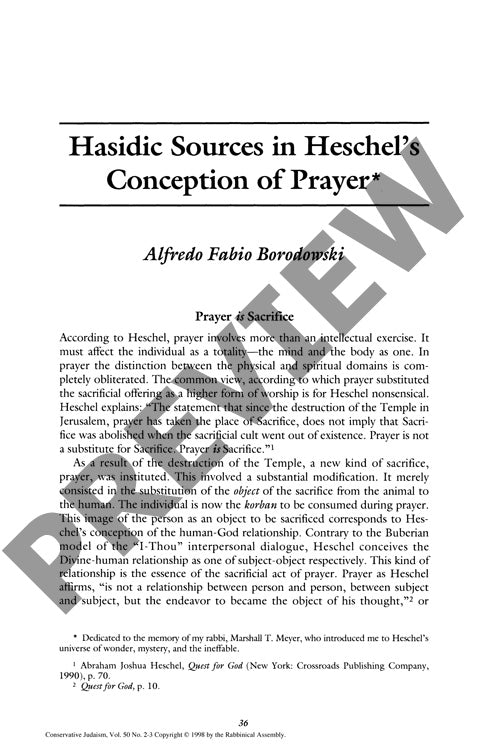Hasidic Sources in Heschels Conception O
Couldn't load pickup availability
Abraham Joshua Heschel's influential conception of prayer, while widely celebrated in modern Jewish theology, springs directly from eighteenth-century Hasidic mysticism. Through comparative analysis of Heschel's "Quest for God" and primary Hasidic texts including the Sefer Baal Shem Tov and Derekh Hasidim, systematic parallels emerge between his theological framework and traditional Hasidic teachings. Heschel's understanding of prayer as sacrifice, where the worshiper becomes the korban, closely mirrors Hasidic concepts of hitlahavut (burning enthusiasm) and mystical death in worship. His radical notion of words as autonomous entities containing divine sparks derives from the Baal Shem Tov's interpretation of sacred language, while his distinction between expressive and empathetic prayer corresponds to established Hasidic typologies. Though Heschel adapts these mystical concepts for modern theological discourse, his fundamental conception of prayer remains anchored in Hasidic traditions, particularly emphasizing the transformative power of ecstatic devotion and the sacred nature of liturgical language. This deep connection between Heschel's thought and Hasidic sources illuminates the vital continuity between traditional Jewish mysticism and twentieth-century Jewish theology.

More Information
-
Physical Description
-
Publication Information
Published 1998
ISBN
-
Publication Credits
Alfredo Borodowski

